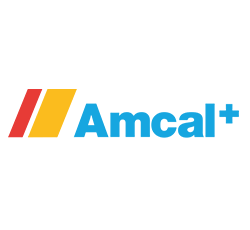Ways to keep breastfeeding when returning to paid work
Returning to paid work used to be considered a reason to stop breastfeeding. Now, Australian legislation protects breastfeeding women and ensures employers provide workplace arrangements to support breastfeeding requirements. This means providing a clean, private space to express and facilities to store breast milk.
Some workplaces also provide lactation breaks which are separate to other meal breaks, to allow for expressing or breastfeeding.
How’s this going to work?
You have many choices about how you can continue to breastfeed after returning to work. Being motivated and believing that you can do it will be the start. There are so many benefits for mothers and their babies to continue to breastfeed that it is worthwhile overcoming most challenges.
Communicating with your employer and line manager about your intention to continue breastfeeding will be helpful. Let them know before your return to work what you want and need.
It may help to talk with other women you know who’ve continued to breastfeed after they have returned to paid work. Check with your workplace colleagues to see if they’ve had similar experiences. Don’t exclude fathers either. Many have had partners who have continued to breastfeed on return to paid work and they may have some useful ideas on how they managed.
It will help to be flexible so you can find a feeding routine which works for you both. Your baby may not be able to maintain the same breastfeeding routine as when you’re together and may feed less often, or take larger feeds. Many mothers will continue to breastfeed when they are with their baby and arrange for bottle feeds of expressed breast milk (EBM) or formula when they are apart.
What’s right for you and your baby is very individual and depends on your baby’s age and feeding behaviours. Older babies can go longer between breastfeeds than younger babies, who need to breastfeed more often. Once babies are on solid foods, from around 6 months of age, many also start drinking from a cup.
Depending on your childcare arrangements you can have:
- your baby brought to you for breastfeeds
- go to your baby to feed them if this is realistic
- work from home.
You could also do a mixture of breastfeeding and bottle feeding. When you’re with your baby you could breastfeed and when you’re apart, they could be offered a bottle (or cup) with expressed breast milk and/or formula. Babies who are fully breastfed and aren’t used to taking a bottle can be reluctant to accept expressed milk or formula. If you’re planning to introduce them to a bottle, make plans to do this early and well before you return to work so they’re used to it.
Expressing breastmilk at work
Practice expressing when you’re at home and if possible, have a ‘bank’ of expressed breastmilk (EBM) in the freezer. There is a large range of pumps to choose from and the choices may seem overwhelming. Do your research around what you can afford and is right for you. Think about whether you will be taking the pump to work each day, or keeping it there. Weight, size, portability and ease of use are all important when considering what pump to buy.
Some women find it easier to express by hand. However, a dual pump can make the process of expressing much quicker, especially when the let down reflex has happened.
How often you express at work will depend on how frequently you are used to breastfeeding your baby and your milk supply. Many women find their supply reduces when they return to work and expressing more often can be helpful increasing milk volume produced. What works for many women is to express at the times when their baby would normally breastfeed.
Use sterilised bottles or EBM bags to store your breastmilk in the fridge or freezer at work. Make sure you label them with your name, date and time you expressed. If there are other women expressing at your workplace, this is particularly important.
Use an insulated or freezer bag with an ice brick to keep the milk cool so you can transport it home safely. If you’re expressing more than once at work, make sure you don’t mix warm EBM with cold which has already been in the fridge.
You may feel awkward at first when expressing at work. Make sure you have access to a clean, private area with a comfortable chair. It may help to take a photo of your baby or an item of their clothing which has their smell on it. These cues are useful for many women to start the milk ejection reflex and to ‘let down’. It may also be helpful to see your baby via your phone when you’re expressing. If possible arrange for this with their caregiver in advance.
Your baby
Talk openly with your baby’s caregiver so they’re clear on how to manage your baby’s feeding. You may want to breastfeed just before leaving and then offer a breastfeed when you return. Doing this will impact on the number and times of feeds which your baby needs in your absence. Let the caregiver know if you’re keen to continue breastfeeding so they can do what they can to support you.
Be mindful that breastfeeding is more than just a feeding process. There’s a range of emotions and hormones which impact on your breastfeeding relationship. Be patient with yourself and your baby as you adapt to the changes which will be inevitable when you return to paid work.
You may find your baby starts waking more often through the night and wants to breastfeed at times when they would usually sleep. They may want more cuddles and reassurance when you are together. Alternately, they may seem a little detached and somehow, more independent since your return to work.
One more thing
It’s normal to feel a range of emotions when returning to paid work after a parental leave. Excitement, concern, anxiety and even guilt are common. Tiredness is also very common, especially when a baby is not sleeping well at night and wants to be close. Give yourself time and be kind as you adapt to these changes.
Written for Multi-Mam by Jane Barry, Midwife and Child Health Nurse, February 2024.







